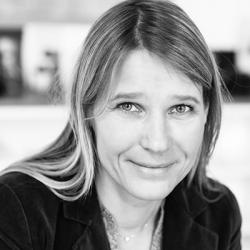Surrealist Ecologies
Surrealist Ecologies
Deep in the Surinamese rainforest stands an abandoned locomotive, overgrown with vines that seem to engulf the steel giant. This striking image accompanied Benjamin Péret’s 1937 short story La nature dévore et éclipse le progrès, published in the surrealist journal Minotaure. In it, Péret describes how technology—as the vanguard of human expansion, from telegraph cables to dynamite and machines—violently intrudes upon nature. Faced with such aggression, even the flowers are made to weep. Yet ultimately, in both image and text, nature asserts its power: it brings progress to a halt and transforms it into a relic. A similar motif appears in Max Ernst’s painting series Jardin Gobe Avions (1935–1936). A machine-like bird is shown stranded in an uncanny landscape. Plants sprout from its metallic surfaces, intertwining with the very technology they overtake. Airplanes—symbols of human dominance over nature—are here overwhelmed by a vital and uncontrollable vegetation. Nature triumphs, not as a romantic backdrop, but as an autonomous force with an unpredictable course.
These surrealist visions can be read as early aesthetic reflections on ecological disruption—long before environmental issues became a central political concern. In the aftermath of World War I, Surrealism developed a visual language for a world out of balance. Its critique of Western anthropocentrism and humanism, as well as its recourse to myths, alchemy, and non-Western knowledge systems, opened up alternative ways of thinking about the relationship between humanity, nature, and technology. This book project investigates how ecological perspectives emerge and take shape within Surrealism. What images do artists create to address the fractured relationship between culture and nature? In what aesthetic forms—political, romantic, feminist, mythological, or hybrid—do ecological motifs appear? And what role does art play in the perception and negotiation of ecological processes? Through selected case studies spanning from the interwar years to the 1960s, the project traces the diverse manifestations of ecological thought in Surrealism—from art historical, media-cultural, and intellectual-historical perspectives.
From September 2019 to June 2020, Julia Drost pursued her research as a scholar-in-residence at the Getty Research Institute in Los Angeles, as part of the annual theme Art & Ecology, and is now continuing her work at the DFK Paris.
Leadership





